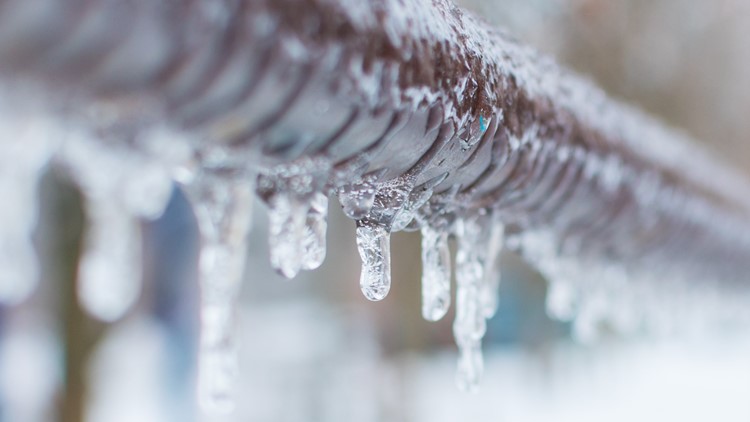Protecting Your Pipes from Cold Weather: Effective Strategies
Protecting Your Pipes from Cold Weather: Effective Strategies
Blog Article
How do you actually feel with regards to Preventing and dealing with frozen pipes?

Cold weather can wreak havoc on your plumbing, especially by freezing pipelines. Below's just how to stop it from taking place and what to do if it does.
Intro
As temperature levels decline, the threat of icy pipelines rises, possibly causing expensive repairs and water damages. Comprehending exactly how to prevent icy pipelines is important for property owners in cold environments.
Comprehending Frozen Pipelines
What causes pipelines to freeze?
Pipelines freeze when exposed to temperature levels listed below 32 ° F (0 ° C) for extended durations. As water inside the pipes ices up, it broadens, putting pressure on the pipeline wall surfaces and possibly creating them to rupture.
Dangers and damages
Icy pipelines can cause supply of water disturbances, home damage, and costly fixings. Burst pipes can flooding homes and cause considerable structural damages.
Signs of Frozen Pipeline
Recognizing frozen pipes early can avoid them from rupturing.
How to determine frozen pipelines
Seek decreased water circulation from faucets, uncommon odors or noises from pipes, and noticeable frost on exposed pipelines.
Avoidance Tips
Protecting susceptible pipelines
Cover pipelines in insulation sleeves or utilize heat tape to shield them from freezing temperature levels. Focus on pipelines in unheated or outside areas of the home.
Home heating methods
Maintain interior rooms effectively heated, specifically areas with pipes. Open up closet doors to allow warm air to flow around pipes under sinks.
Securing Outdoor Pipes
Garden hoses and outside faucets
Detach and drain yard hoses prior to winter. Mount frost-proof spigots or cover outside taps with shielded caps.
What to Do If Your Pipes Freeze
Immediate actions to take
If you presume icy pipelines, maintain faucets open up to ease pressure as the ice melts. Use a hairdryer or towels soaked in warm water to thaw pipelines gradually.
Long-Term Solutions
Structural adjustments
Consider rerouting pipelines far from exterior wall surfaces or unheated locations. Add extra insulation to attic rooms, basements, and crawl spaces.
Updating insulation
Purchase premium insulation for pipes, attic rooms, and walls. Correct insulation aids preserve regular temperatures and reduces the danger of icy pipes.
Verdict
Avoiding icy pipes needs aggressive measures and quick feedbacks. By understanding the causes, indicators, and safety nets, homeowners can safeguard their pipes throughout winter.
5 Ways to Prevent Frozen Pipes
Drain Outdoor Faucets and Disconnect Hoses
First, close the shut-off valve that controls the flow of water in the pipe to your outdoor faucet. Then, head outside to disconnect and drain your hose and open the outdoor faucet to allow the water to completely drain out of the line. Turn off the faucet when done. Finally, head back to the shut-off valve and drain the remaining water inside the pipe into a bucket or container. Additionally, if you have a home irrigation system, you should consider hiring an expert to clear the system of water each year.
Insulate Pipes
One of the best and most cost-effective methods for preventing frozen water pipes is to wrap your pipes with insulation. This is especially important for areas in your home that aren’t exposed to heat, such as an attic. We suggest using foam sleeves, which can typically be found at your local hardware store.
Keep Heat Running at 65
Your pipes are located inside your walls, and the temperature there is much colder than the rest of the house. To prevent your pipes from freezing, The Insurance Information Institute suggests that you keep your home heated to at least 65 degrees, even when traveling. You may want to invest in smart devices that can keep an eye on the temperature in your home while you’re away.
Leave Water Dripping
Moving water — even a small trickle — can prevent ice from forming inside your pipes. When freezing temps are imminent, start a drip of water from all faucets that serve exposed pipes. Leaving a few faucets running will also help relieve pressure inside the pipes and help prevent a rupture if the water inside freezes.
Open Cupboard Doors
Warm your kitchen and bathroom pipes by opening cupboards and vanities. You should also leave your interior doors ajar to help warm air circulate evenly throughout your home.

I stumbled upon that review about Preventing and dealing with frozen pipes when doing a search on the web. If you appreciated our page please remember to share it. I am grateful for your time. Don't forget to check up our website back soon.
Click Here Report this page